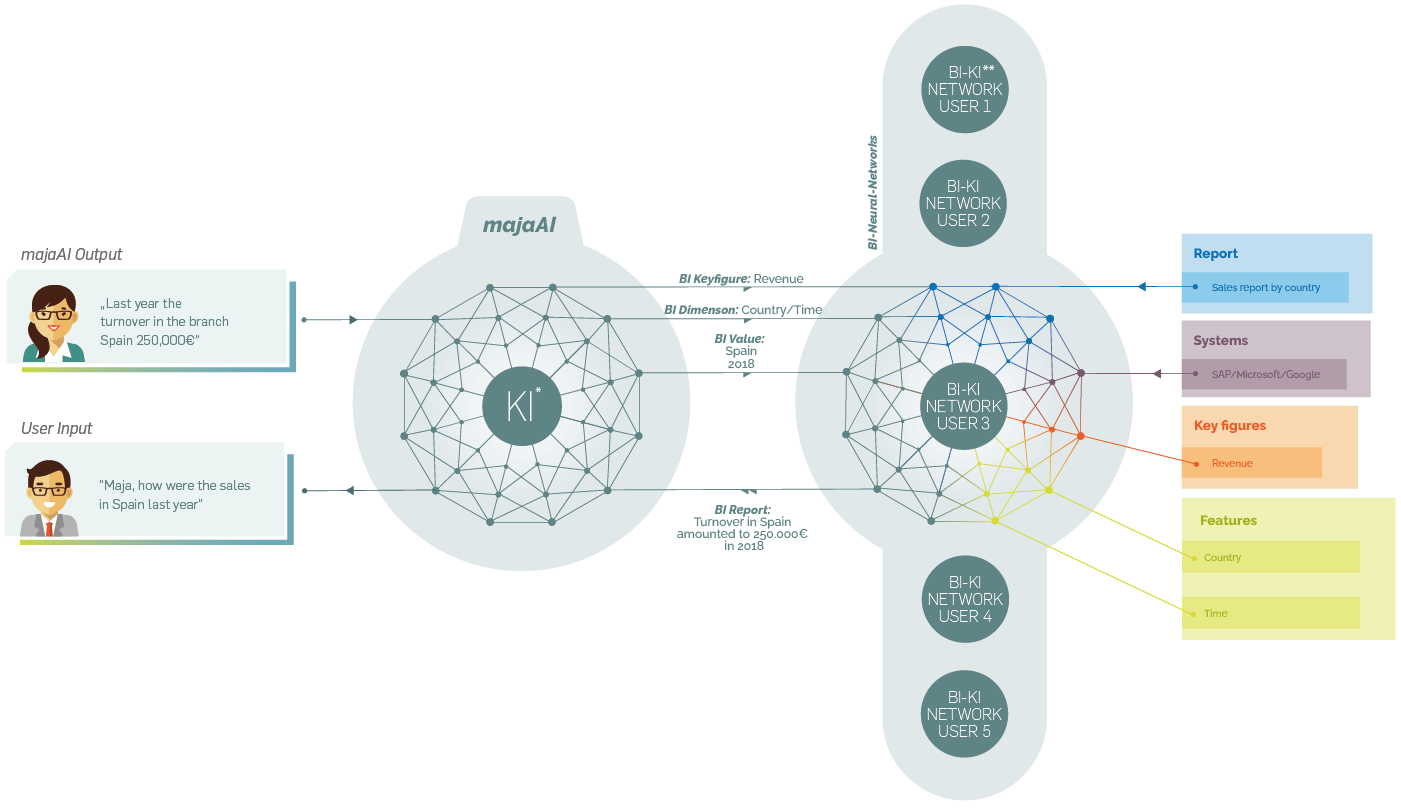Machine learning
Machine learning enables the artificial intelligence of open bi to develop new content-related connections between data through training. If a search on the web finds a >85% result, new neurons are formed independently. In future, this question will lead to a 100% hit, which can then also be found in a shorter time. So when open bi is asked new questions that are similar to questions known to the system, open bi learns.
In majaAI's cloud solution, all customers use a common neural network. The output of the answers remains customer-specific, so no one has access to the data of another customer. Thus, however, all users train a common neural network, which maximises the learning effect.
